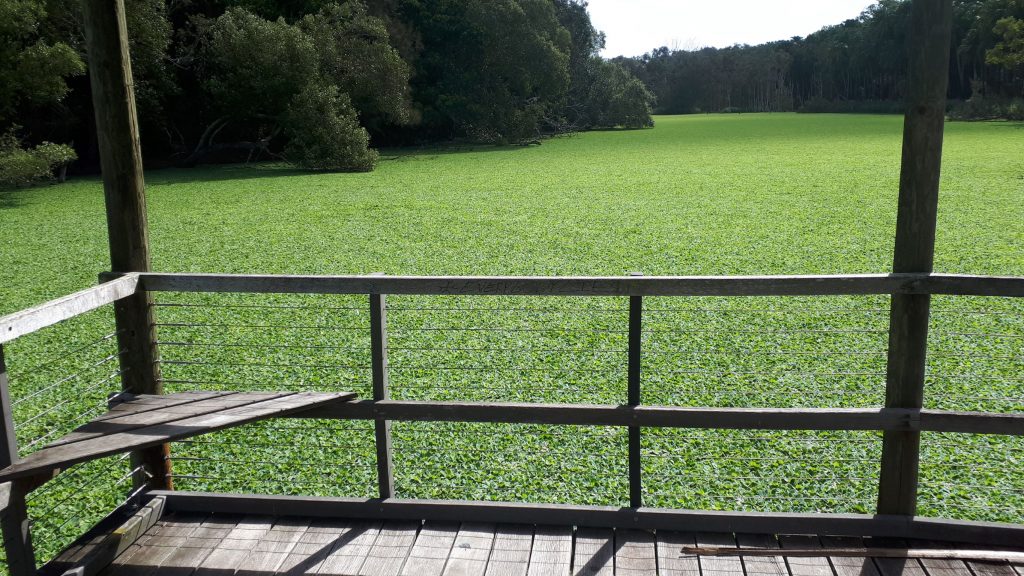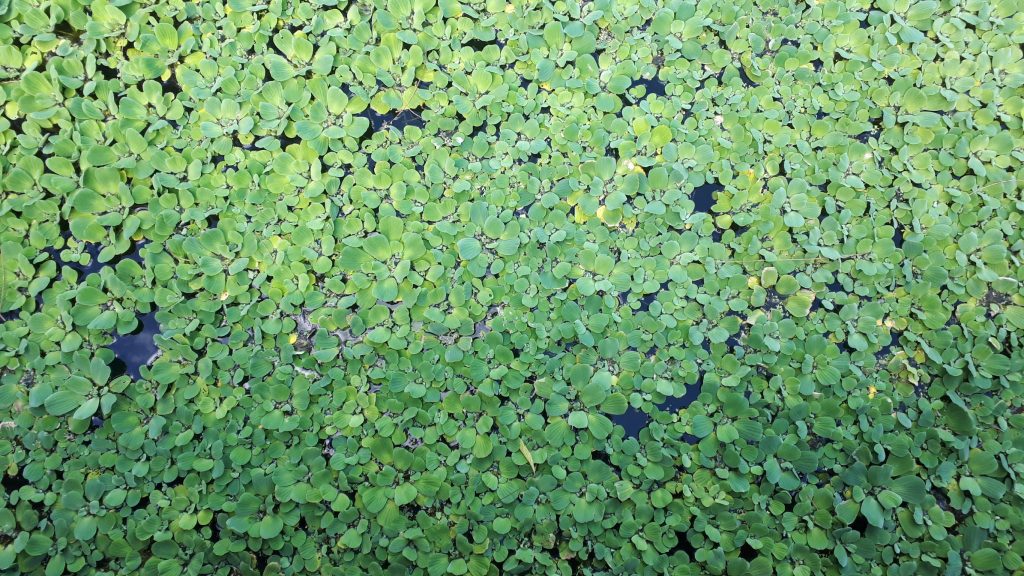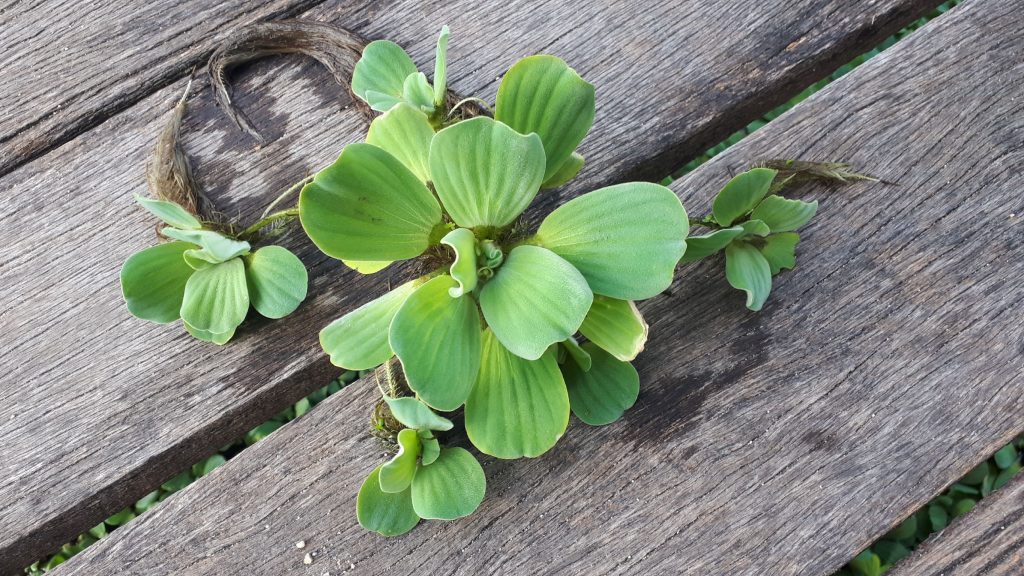
A significant water lettuce outbreak, which is detrimental to the eco system and a breeding ground for mosquitoes, in Moore Park Beach will be treated and removed.
Bundaberg Regional Council inspected the site last week confirming the identification of the invasive weed.
The outbreak in the wetlands stretches from Olive Avenue to Ohlaf Street and will require the closure of some walkways during the treatment process.
Under the Biosecurity Act 2014, water lettuce is classed as a category 3 restricted plant and cannot be sold, given away or released into the environment.
According to the Department of Agriculture and Fisheries (DAF), water lettuce is a free-floating aquatic weed that rapidly forms dense mats covering rivers, dams and irrigation canals.
“It can restrict water flow, increase water loss by evapotranspiration and can serve as a breeding ground for mosquitoes,” a DAF fact sheet explained.
“It creates a dense cover on the water surface that prevents light penetration and exchange of gasses.
“This leads to a drop of oxygen in the water which is detrimental to the aquatic ecosystem.”
DAF said that, while the origins of water lettuce were unclear, it was introduced to Australia as an aquarium and water garden plant and had now spread throughout eastern Queensland due to flooding and disposal of unwanted plants in natural waterways.

Bundaberg Regional Council Environment portfolio spokesperson Cr Wayne Honor said Council had a biosecurity obligation to take the necessary steps to reduce the risks posed by the plant.
As per the recommended guidelines, Council will undertake a chemical treatment using a commercial drone on Thursday 5 May between about 6 am and 10 am.
“This treatment will be repeated on a routine basis, dependent on its success, and if proven to be effective the bulk of the water lettuce will then be removed,” Cr Honor said.
“It is likely that we will need to treat any remaining smaller patches of the plant from the bank or a small boat as required.”
The walking track surrounding the lagoon and the boardwalk which crosses it will need to be closed during the treatment works as a safety measure while the drone is operating.
Cr Honor said Council was always appreciative when receiving information on potential weed infestations from residents.
“In an area like ours that stretches more than 6000 square kilometres, we rely on residents to be our eyes and ears in every corner of the region,” Cr Honor said.
“And who better than the residents who are so familiar and passionate about their slice of paradise to carry out that role?
“Our land protection team is always happy to assess reports of possible infestations and to see how they can help.
“It is extremely helpful if these reports can be lodged with images and specific location details as well.
“One simple way to do this is via the Snap Send Solve app which actually allows for a report to be lodged with the exact GPS coordinates of the location where the image was captured.”
How to identify water lettuce:
• As the name suggests, the entire plant resembles a small, floating, open head of lettuce.
• The fan-shaped leaves are pale green, have marked parallel veins, are spongy and
• covered with hairs and form a floating rosette.
• The spongy tissue and the air that gets trapped by the hairs give the plant its buoyancy.
• It has a tuft of unbranched, fibrous roots up to 80 cm long.
• Mature plants produce a large number of small, pale white to green, inconspicuous flowers hidden at the base of the leaves of the rosette.
• A membrane separates the male and female flowers.
• The fruit is a berry 5–8 cm across with oblong seeds about 2 mm long, tapered at each end.

How to report a potential invasive weed outbreak:
- Gather as much information as you can, including specific location details and a photo if possible.
- Contact Council’s land protection team by:
- Calling 1300 883 699
- Emailing ceo@bundaberg.qld.gov.au
- Lodging a Snap Send Solve request
- Or visiting one of Council’s service centres in Gin Gin, Childers, Bundaberg and Bargara
Click here for more information about the water lettuce.





I am glad to see that BRC is trying to control this water lettuce infestation. I remember reading about water weed control and the article said that the magic number is 10% – once you have 10% surface water coverage by the weed, then it is time to treat it. Once out of control, it is very hard to clear it.